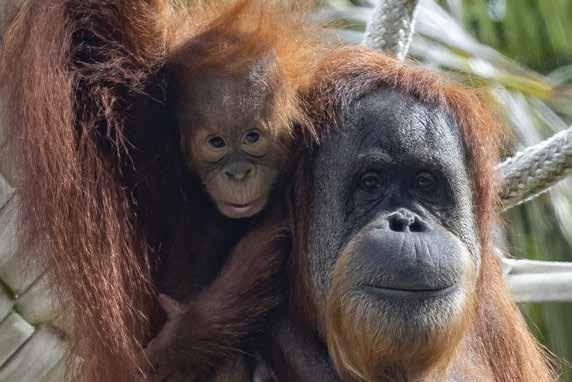
1 minute read
Asian Rainforest Conservation Hub
Southeast Asia is home to nearly 15% of the world’s tropical forests, including multiple biodiversity hotspots and an abundance of wildlife found nowhere else on Earth. However, human behaviors like illegal logging and wildlife trafficking are taking a toll on species across Asia.
Together with local communities and partners, we’re working to protect the region’s unique wildlife. To devise sustainable and inclusive conservation strategies, we collaborate with our allies to better understand the needs and relationships of local people and wildlife, foster coexistence, reduce the trafficking and use of wildlife products, and preserve species and ecosystems for future generations.
Our Wildlife Health team banked umbilical cord stem cells from Kaja that may be used to find treatments for degenerative conditions in orangutans.
Hatching A Comeback

In 2021, we kicked off a collaborative breeding program to help save one of Southeast Asia’s most endangered birds, the milky stork. All of the birds in North America were brought into our care at the Safari Park, and chicks quickly began hatching. In their native habitat of Southeast Asia’s mangroves, only a few hundred of the birds are left, so each new chick is a vital addition to the global population. hatching of four more chicks in 2022 was a milestone moment for this rescue effort, helping maintain a healthy and genetically diverse population needed for the species’ recovery .

Coming Together For Kaja
Every Sumatran orangutan birth is important for this critically endangered species. When 35-year-old Indah required emergency surgery at the Zoo after giving birth to her third baby, Kaja, teams from across the organization sprang into action. Their incredible dedication and innovative thinking not only saved and provided rehabilitative care for Indah, but ensured her infant son had the around-the-clock care he needed . Once the two could reunite, they also did everything in their power to foster a healthy mother-child bond so Indah could raise Kaja herself. After months of patient persistence, reintroductions and socialization to one another, the bond eventually took—and they’ve been inseparable ever since .












